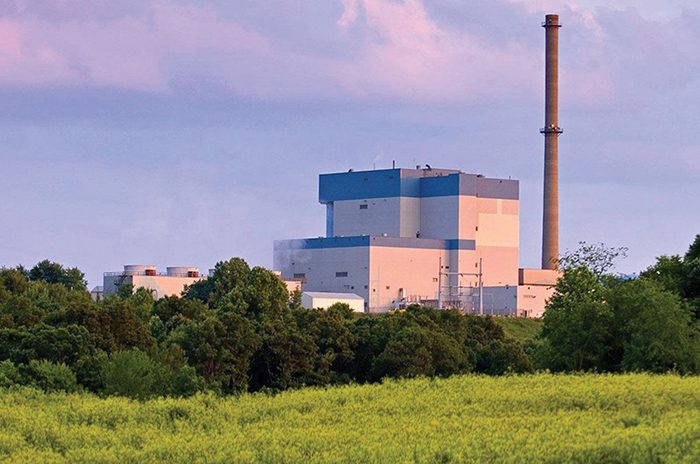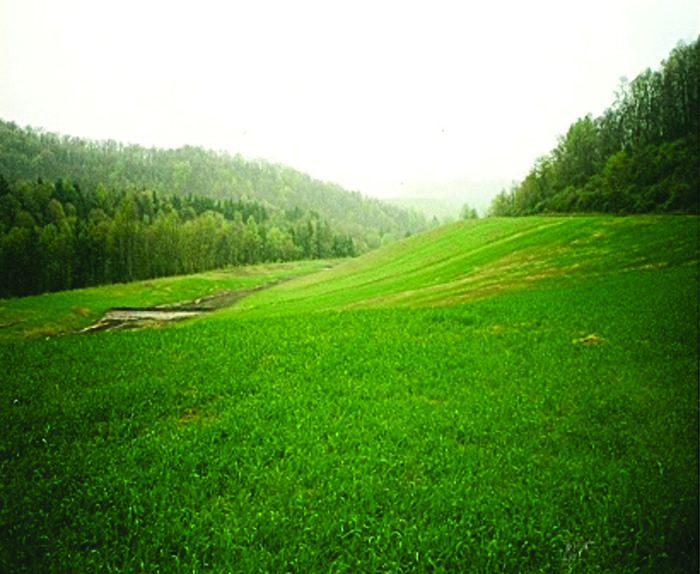The Remarkable Responsibility of Coal Refuse Power
The post The Remarkable Responsibility of Coal Refuse Power appeared first on POWER Magazine.

 |
West Virginia's only remaining coal refuse-fueled facility, the 80-MW Grant Town Power Project, is a 2021 Top Plant winner for powering on, despite challenges, to remediate 530,000 tons of coal refuse annually while reclaiming roughly 30 acres of land per year.
Coal is foundational for West Virginia. It not only underlies the state's undulating topography in more than 100 seams, but mining of the energy-rich bituminous coal has also characterized the livelihood of generations of West Virginians, shaped the state's heritage, and furnished its economic growth since 1810. The commercial coal industry began its first relative boom in 1883 as major rail lines were completed and the newly founded power industry began to burgeon. Since then, West Virginia has harvested 14.7 billion tons of coal in cycles of dizzying growth and decline, fuel that has founded a substantial share of the nation's economic growth.
But along with this good" coal, historic mining activity produced hundreds of millions of tons of coal refuse," including from underground mine development and coal processing. This waste coal, often mixed in with rock, shale, slurry, slate, clay, and other materials, is also known as culm, gob, or boney. Until Congress enacted the Surface Mining Control and Reclamation Act of 1977, this material was randomly stockpiled high on thousands of acres of abandoned mine lands (AML), and scattered across landscapes in coal country, sometimes filling up entire valleys with dark, moonscape-like formations.
The safety and environmental impacts posed by these dumps have been a longstanding concern in West Virginia and elsewhere, noted the Appalachian Region Independent Power Producers Association (ARIPPA). Notwithstanding the ever-present risk that unstable piles could collapse and cause calamity, they are sources of acid mine drainage impacts and could significantly affect water quality in regional streams.
Then there is the risk of fire. Coal refuse piles, which often comprise combustibles, can burn for months at a time, spewing air pollution and posing insidious new health and safety issues.
West Virginia has sought to tackle the problem through a coal mining reclamation program that is primarily funded through a 27.9-cent tax on every short ton of coal produced, as well as bonds (of $1,000 to $5,000 per acre) that mining companies can post. But with the recent economic strain on the coal industry-six publicly traded coal companies holding 52% of the state's permits and 59% of the mines in the state declared bankruptcy between April 2014 and January 2016-the state's reclamation fund is growing more financially vulnerable.
A Power-Generating SolutionThe coal refuse-to-power industry, which got its start through fortuitous timing" between maturation of the circulating fluidized bed (CFB) technology and passage of the Public Utility Regulatory Policies Act of 1978 (PURPA), offers a unique paradigm for mine land reclamation in which environmental and economic objectives overlap," as ARIPPA noted. Though its members have dwindled, challenged by the same market and regulatory forces that have engulfed the coal power industry, sustainability remains at the core of the waste-coal industry's mission.
Because of the costs associated with the removal of coal refuse and fiscal constraints governing public funding, the threats posed by these piles are mostly back-burner issues for government authorities unless or until the mounds suddenly combust and become an immediate health and safety threat to nearby residents," the group said.
But in West Virginia, only one facility-American Bituminous Power Partners' (AMBIT's) 80-MW Grant Town Power Project-remains to execute the mission. The plant, which is sited on 340 acres at the site of the former Federal #1 mine in Grant Town, Marion County, has since 1993 remediated 530,000 tons of coal refuse annually and reclaimed roughly 30 acres of land per year, all while producing 660,000 MWh under an electric energy purchase agreement (EEPA), which ends in 2036 with First Energy's Monongahela Power Co., as Plant Manager Steve Friend told POWER.
A Challenging Fuel SourceGrant Town burns coal waste trucked to the facility from reclamation sites using two Foster Wheeler/Ahlstrom Pyropower CFB boilers to create the steam to drive a turbine generator, Friend said. The fluid, yet highly controlled, process essentially requires injection of pulverized coal refuse and limestone along with strong jets of hot air. The plant uses limestone to control sulfur dioxides, and air distribution and temperature shifts to control nitrogen oxide emissions, he said.
Fuel variability poses a major challenge. Coal refuse doesn't meet market specifications for a coal product, Friend explained. Often, the plant sources two types of waste coal: gob, which is a coarse material leftover from screening operations-basically dirt"-and a finer material, pond fines," which were typically deposited in a slurry pond.
Depending on availability, AMBIT typically tries to blend a 50-50 mix of gob (which has a Btu content as low as 3,000 Btu/pound) and pond fines (ranging from 7,000 Btu to 9,500 Btu) to achieve a given fuel quality each day. The resulting blended fuel can have a wide range of heat and sulfur content, ranging from 5,000 Btu to 7,000 Btu, but it all depends on where we're recovering the waste coal from," Friend said.
The physical fuel properties can also be tricky. It tends to be very sticky in the way that it flows through the chutes to get it into the boiler," Friend said. Another challenge is handling the high moisture content from the pond fines. We have no means to dry any of the fuel, so we're basically stuck with what Mother Nature deals to us from a precipitation and moisture content."
Once the fuel has been combusted, the CFB boiler collects the heavier ash at the bottom and the lighter ash-fly ash-in the fabric collector. The majority of the ash products are sent back to the mine site to aid with reclamation work. In some cases, we don't use all the fuel off a site, so we try to encapsulate any remaining refuse in the ash product, because it is highly alkaline in nature and it's good defense for treating acid mine drainage," Friend said.
Once the ash constitutes volumes that are defined by the various mining permits at a site, it gets capped with dirt and seeded with a product that will make pasture for agricultural use," he said. The ash product itself is a very stable product; it compacts very well, has been listed as a Beneficial Reuse Byproduct by state environmental agencies; and it is well-suited to the mine reclamation work," he added.
Notable Reclamation EffortsGrant Town today owns or leases five reclamation sites. It initiated its efforts at the 1985-closed Federal #1 mine, where the plant is located. The plant has so far removed the majority of the waste fuel at the site, though the reclamation phase continues, Friend said.
The site is already showing clear environmental gains. As just one example, a stream onsite has returned to such good conditions, it is today a state-supported trout fishery. Grant Town also continues to mine coal refuse from the 335-acre Barrackville site, 10 miles away, and reclamation there will likely continue for another decade before that project can be finalized.
  |
1. Grant Town Power Project in 2001 won a West Virginia Department of Environmental Protection award for its efforts to reclaim the Rachel mine site in Marion County (in-progress and after pictures are shown here). Piles of coal gob sat hundreds of feet deep and hundreds of acres wide before the mine closed in 1985. Courtesy: Appalachian Region Independent Power Producers Association |
Among its completed projects are two other sites, the 24-acre Rachel (Figure 1) and the 86-acre Joanne sites, in Marion County. Grant Town, notably, purchased the Rachel site, which had been abandoned by the operator, and entered into a no-cost reclamation contract with the West Virginia Department of Environmental Protection's AML division. Such contracts between the agency and third parties allow the third-party contractor to sell coal encountered during reclamation in compliance with surface mining rules established by the Division of Mining and Reclamation (DMR), Friend explained.
We took the fuel from that site, which was strictly pond fines, and brought it back, and completed the reclamation," he said. Today, there's no water treatment required on that site whatsoever."
Grant Town, notably, also helped reclaim the 48.2-acre Farmington site in partnership with the AML division. That project resulted in the elimination of up to 200 gallons per minute of high-metals acid mine drainage and the removal of several hundreds of thousands of tons of coal fines that potentially would have eroded into the receiving stream.
In addition, Grant Town ash has been used to reclaim otherwise toxic waste material so it can be placed in regulated landfills. The ash has also recently been approved by the West Virginia Department of Highways as an Alternative Supplementary Cementitious Material," which can be used as a substitute for cement in concrete. The substitute can significantly reduce the carbon dioxide emissions created in the manufacturing of concrete," AMBIT said.
Finally, the Grant Town was also pivotal in removing 11,259 tons of useable refuse material abandoned at Cheyenne Sales, a mining operation in Upshur County. Working in partnership with the AML's Office of Special Reclamation (OSR), AMBIT trucked the refuse to Grant Town-at a cost of $18 per ton, which exceeded the net value of the refuse material itself (at $16 per ton)," as the state's Department of Commerce noted in 2017.
However, an added benefit of trucking the refuse to the power plant was the return haul of alkaline fly ash," it added. This fly ash product has been approved as a beneficial use as an amendment for sealing off refuse piles and providing needed alkalinity to offset the acidic refuse."
 |
The Cheyenne Sales project also underscored a significant potential for taxpayer savings, the state added. Two main goals of the project were to alleviate ongoing water treatment at this site and to minimize water infiltration on the reclaimed coal refuse pile. By reducing the amount of acidic coal refuse being deposited on the existing pile, and adding the alkaline fly ash, the preliminary results are indicating that the project was very successful in drastically reducing the AMD from the site," it said.
This could lead to substantial savings, considering the average cost of operating and maintaining a more complex active water treatment site is approximately $57,000 per year, compared to an average cost of $5,000 per year for a passive treatment approach."
-Sonal Patel is a POWER senior associate editor.
The post The Remarkable Responsibility of Coal Refuse Power appeared first on POWER Magazine.